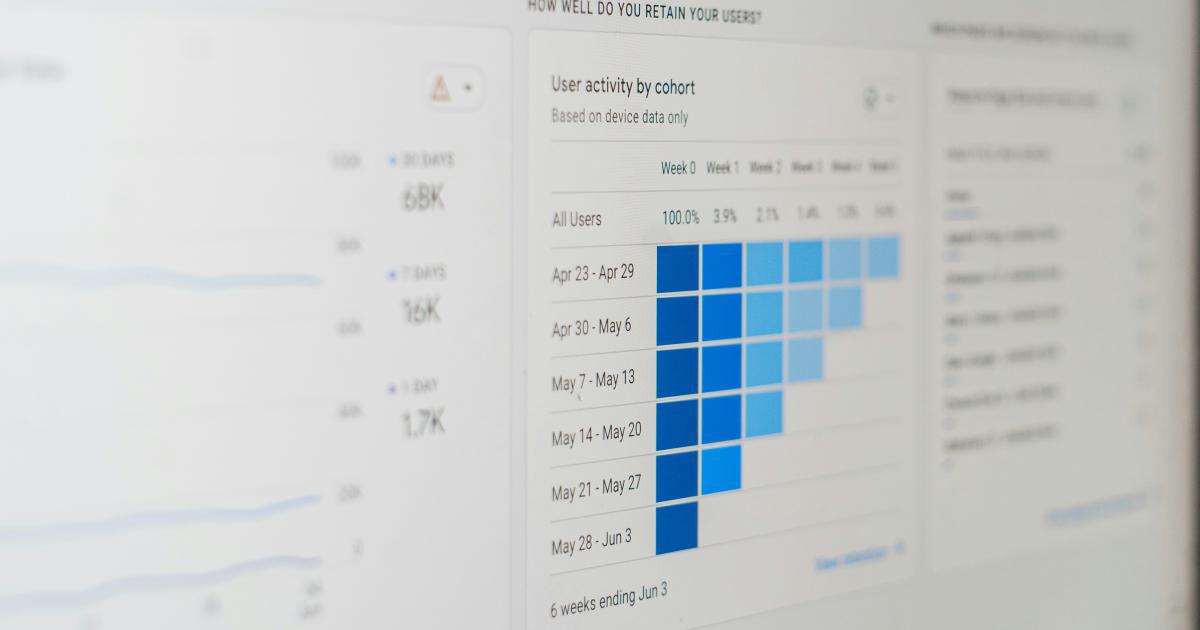Elevate Conversions with User-Centric Event Tracking Metrics


Understanding the Power of User-Centric Event Tracking
In the ever-evolving digital landscape, understanding user behavior has become a crucial aspect of driving successful marketing campaigns and optimizing website performance. One powerful tool in this endeavor is user-centric event tracking, a data-driven approach that provides valuable insights into how your audience interacts with your online presence.

Event tracking is the process of recording and analyzing specific user actions or interactions on your website or application. By monitoring these events, you can gain a deeper understanding of your users' preferences, pain points, and decision-making processes. This knowledge can then be leveraged to enhance the user experience, optimize conversion rates, and ultimately drive business growth.
The key to effective event tracking lies in adopting a user-centric approach. Rather than solely focusing on generic metrics such as page views or bounce rates, user-centric event tracking enables you to track the specific actions and behaviors that matter most to your audience. This shift in perspective allows you to make more informed decisions and implement targeted strategies that truly resonate with your users.
The Importance of User-Centric Event Tracking
In today's competitive digital landscape, delivering a seamless and personalized user experience is paramount. User-centric event tracking empowers you to:
Understand User Behavior: By tracking specific user interactions, you can gain a comprehensive understanding of how your audience navigates your website, which features they engage with, and where they encounter friction or drop-off points.
Optimize Conversion Funnels: Analyzing user journey data can help you identify bottlenecks and optimize your conversion funnels, ensuring that users smoothly progress through the desired actions, whether that's making a purchase, signing up for a newsletter, or completing a form.
Personalize the User Experience: User-centric event tracking allows you to segment your audience based on their behaviors and preferences, enabling you to deliver personalized content, recommendations, and targeted messaging that caters to their specific needs.
Measure the Impact of Campaigns: By tracking user interactions with your marketing campaigns, you can assess the effectiveness of your strategies, measure the return on investment (ROI), and make data-driven decisions to refine and improve your future initiatives.
Identify Emerging Trends: Continuous monitoring of user-centric event data can help you detect emerging trends, uncover new opportunities, and stay ahead of the competition by adapting your offerings and marketing approach to align with evolving user preferences.

Identifying Key User-Centric Event Tracking Metrics
To harness the full potential of user-centric event tracking, it's essential to identify the metrics that matter most to your business objectives. These metrics should provide a comprehensive view of your users' interactions and engagement with your website or application.
Engagement Metrics
Engagement metrics focus on understanding how users interact with your content and features, revealing insights into their level of interest and involvement.
Page Interactions: Track the specific actions users take on each page, such as clicks, scrolls, and time spent, to identify high-engagement content and areas that need improvement.
Content Consumption: Monitor the consumption of your content, including video views, article read times, and multimedia interactions, to gauge user interest and identify popular topics.
User Flow: Analyze the paths users take through your website or application, revealing navigation patterns and potential points of friction or drop-off.

Conversion Metrics
Conversion metrics are crucial for understanding the effectiveness of your marketing and sales efforts, as they directly measure the actions you want users to take.
Lead Generation: Track the completion of lead capture forms, newsletter signups, and other actions that indicate a user's interest in your products or services.
Sales Conversions: Monitor the completion of transactions, such as e-commerce purchases or service bookings, to understand the efficacy of your sales funnel.
Goal Completions: Define and track custom goals that align with your business objectives, such as content downloads, appointment bookings, or social media interactions.
Retention Metrics
Retention metrics help you understand user loyalty and identify opportunities to improve customer lifetime value.
Returning Visitors: Track the percentage of users who return to your website or application, as well as the frequency and duration of their visits, to gauge user loyalty and engagement.
Churn Rate: Monitor the rate at which users stop engaging with your product or service, and analyze the reasons behind their departure to improve customer retention.
User Lifetime Value: Calculate the average revenue or profit generated per user over their lifetime, which can inform your marketing and product strategies.

Behavioral Metrics
Behavioral metrics provide insights into the specific actions and decisions users make, shedding light on their motivations and pain points.
Funnel Abandonment: Identify the points in your conversion funnel where users drop off, and analyze the reasons behind their abandonment to optimize the user journey.
Feature Adoption: Monitor the usage and engagement with specific features or functionality to understand which offerings resonate most with your audience.
Feedback and Sentiment: Collect and analyze user feedback, reviews, and sentiment data to understand their perceptions of your product or service and identify areas for improvement.

Implementing Effective User-Centric Event Tracking
Implementing a robust user-centric event tracking strategy requires a methodical approach. Here are the key steps to ensure successful implementation:
Define Your Goals and Objectives
Begin by clearly defining your business objectives and the specific questions you aim to answer through user-centric event tracking. This will help you determine the most relevant metrics to track and ensure that your data collection efforts are aligned with your goals.
Identify Relevant User Actions and Events
Collaborate with your product, marketing, and analytics teams to identify the key user actions and interactions that are most meaningful to your business. These may include form submissions, content engagement, feature usage, and conversion events, among others.
Establish a Tracking Infrastructure
Implement a reliable event tracking solution, such as Google Analytics, Adobe Analytics, or a custom in-house system, to capture and store the user interaction data. Ensure that your tracking infrastructure is set up to collect the necessary data points and integrate seamlessly with your existing systems.
Define Tracking Parameters and Metadata
Determine the specific parameters and metadata you want to capture for each event, such as user IDs, device information, referral sources, and any other contextual data that can provide valuable insights.
Segment and Analyze User Data
Leverage your event tracking data to segment your audience based on their behaviors, preferences, and demographics. This will enable you to uncover patterns, identify trends, and generate targeted insights to inform your marketing and product strategies.
Optimize and Iterate
Continuously monitor and analyze your user-centric event tracking data to identify areas for optimization. Experiment with different approaches, measure the impact, and refine your strategies to continuously improve the user experience and drive higher conversions.

Leveraging User-Centric Event Tracking for Conversions
Once you have established a robust user-centric event tracking system, you can harness the power of this data to drive higher conversions and achieve your business objectives.
Enhance the User Experience
Use the insights gleaned from your event tracking data to identify and address pain points in the user journey. This may involve simplifying navigation, improving content organization, optimizing form design, or streamlining the checkout process, among other initiatives.

Personalize Content and Offers
Leverage user segmentation to deliver personalized content, recommendations, and offers that cater to the specific needs and preferences of your audience. This targeted approach can significantly improve engagement, conversion rates, and customer loyalty.
Optimize Conversion Funnels
Analyze user flow data to identify bottlenecks and drop-off points in your conversion funnels. Use this information to refine your funnels, test different approaches, and implement data-driven improvements to guide users more effectively towards desired actions.

Measure and Refine Marketing Campaigns
Track user interactions with your marketing campaigns, such as email clicks, social media engagements, and paid ad conversions. Use this data to assess the effectiveness of your strategies, optimize campaign elements, and allocate resources more efficiently to drive higher ROI.

Foster Customer Loyalty and Retention
By monitoring user retention metrics, such as returning visitors and churn rates, you can identify opportunities to improve customer loyalty and lifetime value. This may involve enhancing the post-conversion experience, implementing effective customer retention strategies, or developing loyalty programs that encourage repeat business.

Conclusion: Unlocking the Full Potential of User-Centric Event Tracking
In the ever-evolving digital landscape, user-centric event tracking has emerged as a powerful tool for driving business growth and elevating the user experience. By shifting the focus from generic metrics to user-specific behaviors and interactions, marketers and product teams can make more informed decisions, optimize conversion funnels, and deliver personalized experiences that resonate with their audience.

Embracing user-centric event tracking can unlock a wealth of opportunities for your business, allowing you to:
- Gain a deeper understanding of your users' preferences, pain points, and decision-making processes
- Enhance the user experience by addressing friction points and optimizing conversion funnels
- Personalize content, offers, and marketing campaigns to better align with your audience's needs
- Measure the impact of your strategies and make data-driven decisions to improve ROI
- Foster customer loyalty and retention through targeted initiatives and loyalty programs
By implementing a comprehensive user-centric event tracking strategy, you can elevate your conversions, drive sustainable growth, and stay ahead of the competition in the dynamic digital landscape.